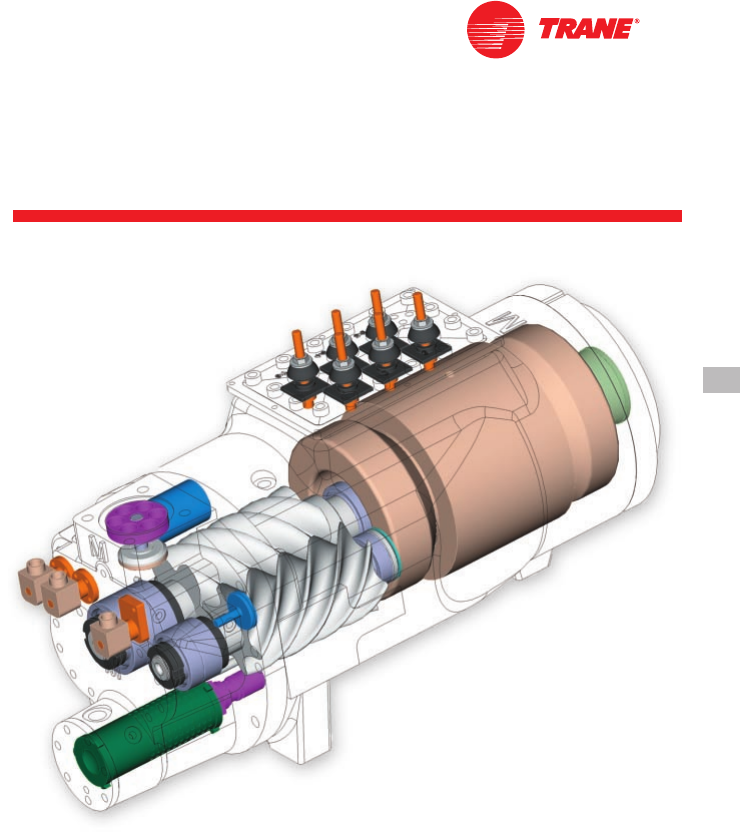
Improved
Acoustical
Performance
5
RLC-PRC005-E4
The sound levels of the Series R Model
RTAA have been steadily improved
since its introduction. With the advent of
the Model RTAC, sound levels are
reduced significantly by addressing two
major sources: the compressor and the
refrigerant piping. First, the compressor
has been specifically designed to
minimize sound generation. Second, the
refrigerant components and piping have
been optimized to reduce sound
propagation throughout the system. The
result: sound levels achieved on the
Model RTAC represent the lowest sound
levels ever on Trane air-cooled helical-
rotary compressor water chillers.
Superior Efficiency Levels:
The Bar Has Been Raised
The standard-efficiency Trane Model
RTAC has COP levels up to 2.90 kW/kW
[9.9 EER] (including fans), while the
premium-efficiency, or high-efficiency,
units leap to COP levels of 3.08 kW/kW
[10.51 EER] (including fans).
The modern technology of the RTAC
with the efficient direct-drive
compressor, the flooded evaporator, the
unique design to separate liquid and
vapor, the electronic expansion valve,
and the revolutionary Tracer
™
Chiller
Controls, has permitted Trane to achieve
these efficiency levels, unmatched in the
industry.
Precise Rotor Tip Clearances
Higher energy efficiency in a helical-
rotary compressor is obtained by
reducing the rotor tip clearances. This
next-generation compressor is no
exception. With today’s advanced
manufacturing technology, clearances
can be controlled to even tighter
tolerances. This reduces the leakage
between high- and low-pressure cavities
during compression, allowing for more
efficient compressor operation.
Capacity Control and Load Matching
The combination patented unloading
system on Trane helical-rotary
compressors uses the variable
unloading valve for the majority of the
unloading function. This allows the
compressor to modulate infinitely, to
exactly match building load and to
maintain chilled-water supply
temperatures within ± 0.3°C [±0.5°F] of
the set point. Reciprocating and helical-
rotary chillers that rely on stepped
capacity control must run at a capacity
equal to or greater than the load, and
typically can only maintain water
temperature to around ± 1°C [±2°F].
Much of this excess capacity is lost
because overcooling goes toward
removing building latent heat, causing
the building to be dried beyond normal
comfort requirements. When the load
becomes very low, the compressor also
uses a step unloader valve, which is a
single unloading step to achieve the
minimum unloading point of the
compressor. The result of this design is
optimized part-load performance far
superior to single reciprocating
compressors and step-only helical-
rotary compressors.
Figure 2 Cutaway of a compressor


















